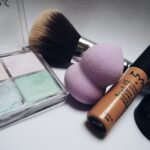Creating a skincare routine tailored to your specific skin type is essential for maintaining a healthy, radiant complexion. Whether you have oily, dry, combination, or sensitive skin, understanding your unique needs can transform your skin’s appearance and feel. In this comprehensive guide, we’ll walk you through the steps to build the perfect skincare routine, offering practical tips and product recommendations to suit various skin types. By the end, you’ll have a clear roadmap to glowing, healthy skin.
Why a Personalised Skincare Routine Matters
Your skin is as unique as you are. Factors like genetics, environment, and lifestyle influence whether your skin leans oily, dry, or somewhere in between. Using a one-size-fits-all approach often leads to irritation, breakouts, or lacklustre results. A personalised routine addresses your skin’s specific concerns, helping to balance moisture, control oil, or soothe sensitivity. Let’s dive into how to identify your skin type and craft a routine that works for you.
Step 1: Identify Your Skin Type
Before you start layering on products, it’s crucial to know your skin type. Here’s a quick breakdown of the main categories and how to spot them:
- Oily Skin: Shiny appearance, especially in the T-zone (forehead, nose, chin), with visible pores and a tendency for acne or blackheads.
- Dry Skin: Feels tight or rough, often with flaking or redness, and may look dull due to lack of moisture.
- Combination Skin: A mix of oily (usually T-zone) and dry or normal areas (cheeks), requiring a balanced approach.
- Sensitive Skin: Prone to redness, itching, or reactions to products, often feeling irritated by harsh ingredients.
- Normal Skin: Neither too oily nor too dry, with minimal imperfections and a smooth texture.
Not sure where you fit? Wash your face with a gentle cleanser and wait an hour without applying any products. Observe how your skin feels and looks—tightness suggests dryness, while shine indicates oiliness. If you’re still unsure, a dermatologist can provide a professional assessment.
Step 2: The Core Components of Any Skincare Routine
Regardless of skin type, every routine should include these fundamental steps: cleansing, moisturising, and sun protection. From there, you can add targeted treatments. Here’s how to approach each step based on your skin type.
Cleansing: The Foundation of Healthy Skin
Cleansing removes dirt, oil, and impurities, preventing clogged pores and breakouts. Do this twice daily—morning and night—to keep your skin fresh.
- Oily Skin: Opt for a gel-based or foaming cleanser with ingredients like salicylic acid to control excess oil without stripping your skin.
- Dry Skin: Use a creamy or oil-based cleanser to hydrate while cleansing, avoiding harsh sulphates that can worsen dryness.
- Combination Skin: A mild foaming cleanser works well to balance both oily and dry areas.
- Sensitive Skin: Choose a fragrance-free, gentle cleanser with calming ingredients like aloe vera or chamomile.
- Normal Skin: A basic, non-irritating cleanser suits your balanced skin without overcomplicating things.
Tip: Don’t over-wash, as it can disrupt your skin’s natural barrier, leading to irritation or oil overproduction.

Moisturising: Lock in Hydration
Moisturising is non-negotiable, even for oily skin types. It keeps your skin barrier healthy and prevents dehydration, which can exacerbate oiliness or dryness.
- Oily Skin: Go for a lightweight, non-comedogenic (won’t clog pores) moisturiser with ingredients like hyaluronic acid for hydration without grease.
- Dry Skin: Use a rich, emollient cream with ceramides or shea butter to restore moisture and soothe tightness.
- Combination Skin: Apply a light lotion to oily areas and a heavier cream on drier patches if needed.
- Sensitive Skin: Look for hypoallergenic, fragrance-free moisturisers with calming agents like centella asiatica.
- Normal Skin: A simple, hydrating lotion or cream will maintain your skin’s natural balance.
Tip: Apply moisturiser to damp skin after cleansing to trap in extra hydration.
Sun Protection: Your Skin’s Best Defence
Sunscreen isn’t optional—it’s a must to prevent premature ageing, hyperpigmentation, and skin cancer. Use a broad-spectrum SPF 30 or higher every morning, even on cloudy days.
- Oily Skin: Choose a mattifying, gel-based sunscreen to avoid a greasy finish.
- Dry Skin: Opt for a hydrating sunscreen with added moisturising ingredients.
- Combination Skin: A lightweight SPF lotion works across varied zones.
- Sensitive Skin: Pick a mineral-based sunscreen with zinc oxide or titanium dioxide to minimise irritation.
- Normal Skin: Any broad-spectrum SPF suits, as long as it’s comfortable to wear.
Tip: Reapply every two hours if you’re outdoors, especially after swimming or sweating.
Step 3: Add Targeted Treatments
Once you’ve mastered the basics, incorporate treatments to address specific concerns like acne, pigmentation, or fine lines. Use these sparingly at first to avoid overwhelming your skin.
Exfoliation: Renew and Refresh
Exfoliation sloughs off dead skin cells, revealing a brighter complexion. Limit to 1-2 times weekly to avoid overdoing it.
- Oily Skin: Use a chemical exfoliant with salicylic acid to unclog pores and reduce oil.
- Dry Skin: Opt for a gentle physical scrub or mild lactic acid to avoid stripping moisture.
- Combination Skin: Alternate between chemical and physical exfoliants based on area needs.
- Sensitive Skin: Stick to very mild exfoliants or enzyme-based products to prevent redness.
- Normal Skin: A balanced exfoliant, used occasionally, keeps your glow intact.
Serums: Boost Your Routine
Serums deliver potent ingredients for targeted results. Apply after cleansing but before moisturising.
- Oily Skin: Niacinamide serums help control oil and minimise pores.
- Dry Skin: Hyaluronic acid serums add intense hydration.
- Combination Skin: Vitamin C serums brighten and balance overall tone.
- Sensitive Skin: Look for soothing serums with peptides or aloe.
- Normal Skin: Experiment with anti-ageing serums like retinol for prevention.
Masks: Weekly Pampering
Face masks offer a deeper treatment once or twice a week.
- Oily Skin: Clay masks detoxify and absorb excess oil.
- Dry Skin: Hydrating sheet masks replenish lost moisture.
- Combination Skin: Multi-mask—clay on oily zones, hydrating on dry areas.
- Sensitive Skin: Calming masks with oat or chamomile soothe irritation.
- Normal Skin: Use hydrating or brightening masks for a boost.
Step 4: Lifestyle Habits for Better Skin
Products alone won’t transform your skin. Your daily habits play a huge role in maintaining a healthy complexion.
- Stay Hydrated: Drink plenty of water to support skin hydration from within.
- Eat Well: Include antioxidants from fruits, vegetables, and nuts to combat free radical damage.
- Sleep Enough: Aim for 7-9 hours nightly to allow skin repair and regeneration.
- Manage Stress: High stress can trigger breakouts or sensitivity, so practise relaxation techniques.
- Avoid Touching Your Face: This prevents transferring dirt and bacteria to your skin.
Step 5: Test and Adjust Your Routine
Skincare isn’t static. Your skin’s needs change with seasons, age, or hormonal shifts. Start with a simple routine, observe how your skin responds over 4-6 weeks, and tweak as needed. If a product causes irritation, stop using it and consult a dermatologist. Patch-test new products on a small area, like behind your ear, before full application.
Common Mistakes to Avoid
- Overloading Products: Too many actives (like retinol and acids together) can irritate skin. Introduce one at a time.
- Skipping SPF: Even indoors, UVA rays penetrate windows, ageing your skin.
- Harsh Scrubbing: Aggressive exfoliation damages your skin barrier—gentle is best.
- Ignoring Diet: Sugary or greasy foods can worsen acne for some; balance is key.
- Not Cleansing Properly: Leftover makeup or sunscreen clogs pores, so double-cleanse if needed.
Frequently Asked Questions (FAQs)
Q1: How often should I change my skincare routine?
A: Adjust your routine every 3-6 months or with seasonal changes. For instance, use heavier moisturisers in winter and lighter ones in summer. Monitor your skin’s response to products and tweak accordingly.
Q2: Can I use the same products for day and night?
A: Some products, like cleansers and moisturisers, work for both. However, night routines can include heavier treatments like retinol, while daytime focuses on SPF protection.
Q3: How long does it take to see results from a skincare routine?
A: Most products show results in 4-6 weeks, though actives like retinol may take 8-12 weeks for full effects. Consistency is key—don’t give up too soon.
Q4: Should I consult a dermatologist for my routine?
A: If you have persistent issues like severe acne, eczema, or rosacea, a dermatologist can provide tailored advice and prescription treatments.
Q5: Are expensive skincare products always better?
A: Not necessarily. Price doesn’t guarantee results. Focus on ingredients and how your skin reacts rather than brand or cost.
Additional Resources for Skincare Success
To deepen your skincare knowledge, explore these helpful topics and tools:
- Learn about ingredient benefits to choose products wisely.
- Discover oily skin tips for managing shine.
- Find dry skin solutions to combat tightness.
- Explore combination skin hacks for balanced care.
- Understand sensitive skin care to avoid irritation.
- Check out normal skin maintenance for easy routines.
- Read about sunscreen myths to protect better.
- Learn exfoliation dos and don’ts for safe renewal.
- Dive into serum layering for maximum benefits.
- Explore face mask types for weekly treats.
- Understand hydration importance for skin health.
- Discover diet and skin links for internal care.
- Learn stress-skin effects to manage flare-ups.
- Find sleep and skin benefits for better rest.
- Check dermatologist advice for expert insights.
Final Thoughts
Building the perfect skincare routine for your skin type is a journey of trial, error, and consistency. Start with the basics—cleansing, moisturising, and SPF—then layer in treatments as needed. Pay attention to how your skin reacts, adapt to changes, and complement your routine with healthy habits. With patience, you’ll unlock the secret to a complexion that’s not just beautiful, but truly yours.






